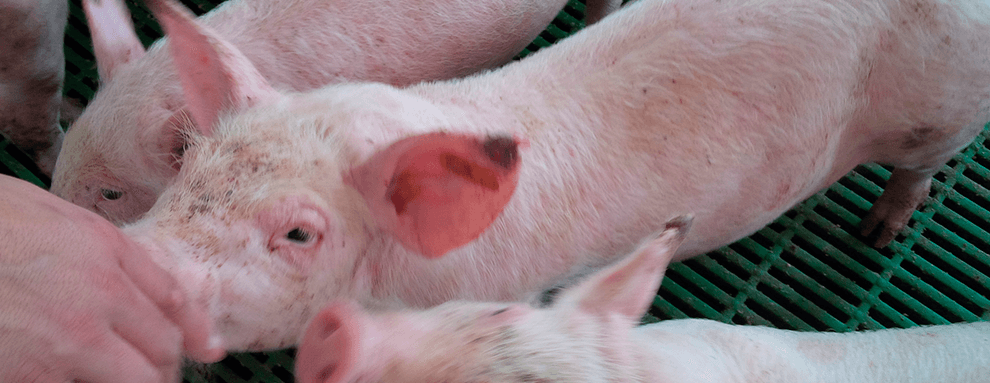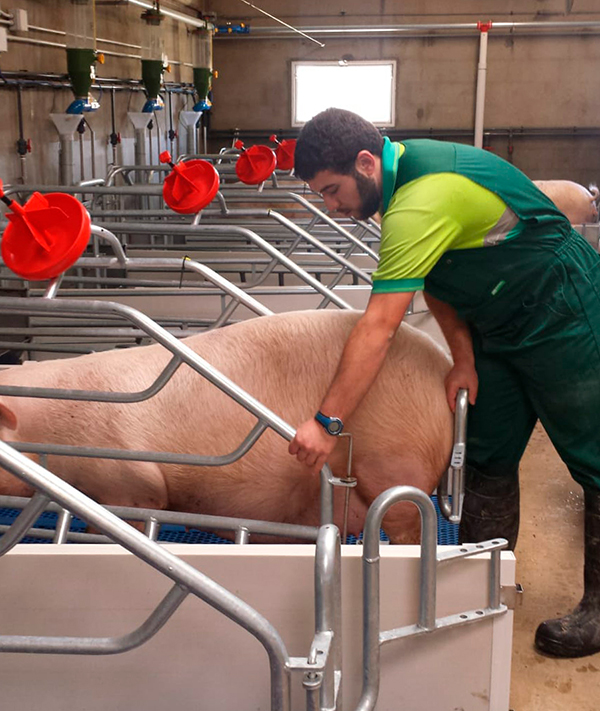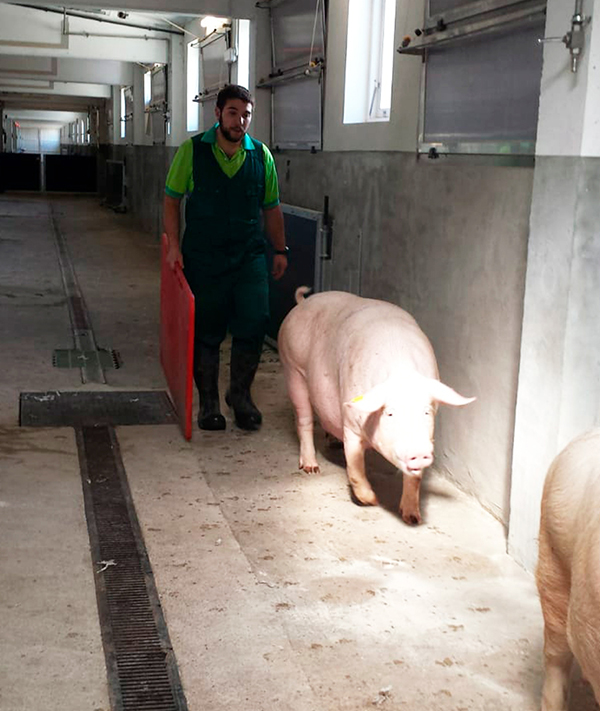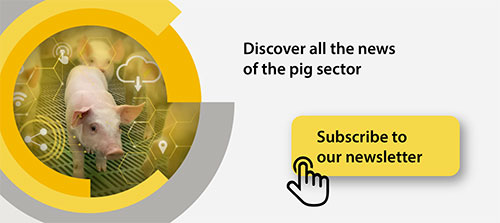Blog
Blog

Human-animal interaction
14th February 2019 - Studies
Josep Rius. Rotecna R+D Department.
Former U.S. President Harry Truman once stated: "No man should be allowed to be president who does not understand pigs."
Although productivity and animal welfare may seem like incompatible goals, we can align them by using our knowledge of pig biology and behavior to their advantage (Alonso, 2014). According to Hughes (1976), animal welfare can be defined as a state of complete mental and physical health, where the animal is in perfect harmony with its environment. Animal welfare improves when they experience positive emotions and declines when they endure negative emotions such as pain or fear.
Negative human-animal interactions have a difficult-to-quantify impact on productivity, but chronic stress caused by traumatic fear sensations affects parameters that compromise growth, the immune system, and reproductive performance, among other factors (Boissy, 1995; Janczak, 2003). To understand why pigs feel fear, we must first know what and how they feel. Pigs can learn and remember aversive events, such as painful procedures. They vividly recall bad past experiences, such as being moved improperly by a caretaker, making them more difficult to handle in the future. They are highly sensitive to everything happening around them because they are naturally curious and investigative. In the wild, they spend their days walking and seeking new stimuli. To aid this, they have a snout equipped with a sensitive disc containing olfactory epithelium, which they use for identification, feeding, reproduction, and detecting scents up to one meter underground and ten meters away.
Sensory Characteristics
- Touch: Pigs can identify and differentiate textures, temperature changes, and relative humidity variations.
- Taste: They have 15,000 taste buds, while humans have only 9,000. They have a strong preference for sweet flavors and prefer moist foods.
- Hearing: Pigs can produce around 25 to 30 different vocalizations, with frequency variations between 42 and 40,500 Hz. They communicate with over twenty sounds, depending on what they need to express, whether it's their needs or emotions. High-pitched sounds and sudden movements frighten them.
- Vision: Their vision ranges from 30° to 50°, with a single focal point up to 1.5 meters away and a 310° peripheral vision field.

Photo: Granja de Valfarta.
Behavior
Pigs have a rich emotional world that closely resembles human emotional complexity. Their highly evolved social behavior includes the ability to develop conflict-resolution strategies based on individual experiences and strong learning skills supported by emotional sensations (Vázquez, 1997).
Pigs are noble and loyal animals. Like dogs, they have been shown to be affectionate and highly social with both their peers and humans. They love being scratched, being in the company of others, and receiving attention. They exhibit complex social behaviors such as playing, protecting, and forming bonds with other living beings. They have excellent long-term memory, not only remembering their names but also voices and commands. Pigs can dream, and according to Professor Stanley Curtis of Penn State University, they can form "abstract representations," meaning they can retain an image in their minds for long periods.
It is often said that pigs are more intelligent than a three-year-old human. Various studies from the University of Illinois and the University of Cambridge have demonstrated their impressive memory and ability to learn. Pigs can follow others to steal food and recognize those who steal from them, even adjusting their behavior to minimize theft.
Body Language
Given these important characteristics, caregivers must learn to interpret pigs' body language to understand how they feel in different situations and respond accordingly. It is crucial to recognize what the animal is seeking, as they communicate their level of fear through their head, eyes, ears, and body movements.
Calm behavior:
- Their attention is primarily directed forward.
- They maintain a safe distance from the handler and respond to pressure release (distance between the caregiver and pigs).
- Their body is relaxed, with head and ears lowered.
- They move at a normal pace or trot.
- They respond to a low-pitched voice.
Signs of fear and defensive behavior:
- Their attention is focused on the caregiver.
- The caregiver is too close, applying too much pressure, and the pig is unable to move away.
- They stop moving forward, try to turn around or back up, and in some cases, refuse to move.
- They attempt to pass under, over, or between handlers or obstacles.
- Their head and ears are raised.
- If possible, they group with their peers, making separation difficult.
- They react to loud noises, voices, or shouting.
- They are disturbed by changes in flooring levels, surface textures, lighting, or ventilation (they dislike wind).
How to React to Fear
- Step away from the animal to reduce pressure and perceived aggression.
- Soften body language and minimize noise.
- In some cases, reducing the group size may help, while in others, increasing it may be beneficial.
- Encourage pigs to focus on the movement of their peers or the herd rather than the presence of handlers.

Photo: Granja de Valfarta.
Understanding pig behavior and body language improves the relationship between caregivers and animals. Applying this knowledge in daily handling reduces stress, personnel safety risks, and injuries such as bruises, fatigue, and even death. Additionally, it directly affects the final product, as there is a strong correlation between pre-slaughter stress levels and pork meat quality at the cellular level.
Harry Truman emphasized the need to understand pigs as a necessary exercise in empathy, not just among humans but also between humans and animals. There is no doubt that understanding and respecting animals makes us more human.








